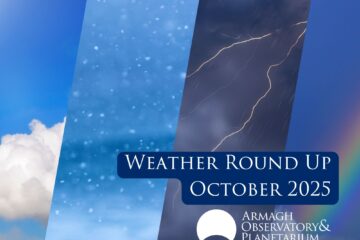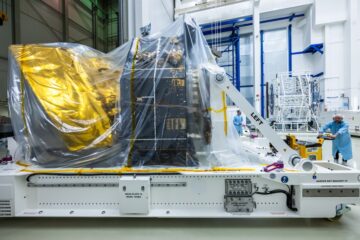Gaia is a satellite launched by the European Space Agency (ESA) on 19 December 2013. It is essentially a census gathering information on over one billion stars, totalling an amazing 1% of the galaxy’s total population, measuring their positions, motion, brightness and colour. Gaia’s primary objective is to create the most precise 3D map of the Milky Way. This will help astronomers to answer important questions about our Galaxies origins and evolution. From this new and improved data we can search for alien worlds, failed stars, exploding stars and even test Einstein’s General Theory of Relativity.
Gaia was not the first mission to attempt to undergo a census of the heavens. In 1989, ESA launched Hipparcus which produced the Tycho catalogues of over 2 million stars – which is still used by astronomers. Gaia’s measurements are 200 times more accurate than Hipparcus, this corresponds to Gaia being able to measure the size of an astronauts thumbnail while he is standing on the moon!
Stars in the Galaxy are not motionless, the ~100 billion stars have diverse velocities depending on their place in the Milky Way. Gaia measures the different ways that celestial objects move in space. One of these motions is parallax. This involves the measurement of small angles which relate to the distance to the celestial object. Hold your finger out in front of you and observe it with one eye closed, then switch eyes – back and forth. You will see that you finger appears to
move compared to the background. The amount that it moves depends on how close your finger is to your face. We can use this effect to measure the distance to stars using the Earths orbit around the Sun as a baseline (see Figure below).
Its not all about the stars, Gaia is a comprehensive mission that does not exclude the all important science behind our own Solar System. Gaia is ideal to search for asteroids close to the Sun which is a blind spot for ground based observers. Detecting and assessing near-Earth objects is of great interest and Gaia is expected to detect tens of thousands.
The first Gaia data release (DR1), published in September of last year, was based on less than one quarter of the total amount of data that will be collected over the five year mission. Gaia is expected to observe each of the ~1 billion stars 70 times. The first catalogue only contained accurate positions and the brightness of 1,142,679,769 stars, but combining this information with similar missions (Tycho-Gaia Astrometric Solution) distances and motions were derived for the two
million stars that the catalogues have in common. But we can do much better than this.
As of 13 Apr 2017 190 publication have used data from Gaia with more being added all the time. One such publication describes how the Gaia satellite has spotted six stars speeding away from the Galactic Centre . This is result of past interactions with the supermassive black hole which resides at the centre of the Milky Way. It is difficult to directly observe the centre of the Galaxy as it is obscured by gas and dust, which is why discoveries such as this are so important. These
hypervelocity stars yield invaluable information about the structure and effects of a difficult to study region of space.
The second data release (DR2) is expected in April 2018 and it is eagerly awaited. It will include parallaxes and proper motions (motion of the star by their physical movement through the Galaxy) as well as temperature estimates for bright stars, a number of light curves and information on over 10,000 pre-selected asteroids. One of the many things we can do with this information is we can study the orbital motions of populations of star and reconstruct the past trajectories of stars to better understand the origins of our Galaxy and estimate the future orbits of the stars far into the future.
For a wonderful explanation of the mission with interactive graphics to explain the compact science ESA provide a handy app call ‘Gaia Mission.’
https://www.cosmos.esa.int/web/gaia/gaia-app
http://sci.esa.int/gaia/
http://sci.esa.int/gaia/59263-artificial-brain-helps-gaia-catch-speeding-stars/
Article by: Pamela Martin






1 Comment
What is happening with Gaia? – MeasurementDataBases for Industry & Science · September 29, 2017 at 06:58
[…] Astronotes Astronotes: Gaia is a satellite launched by the European Space Agency (ESA) on 19 December 2013. It […]